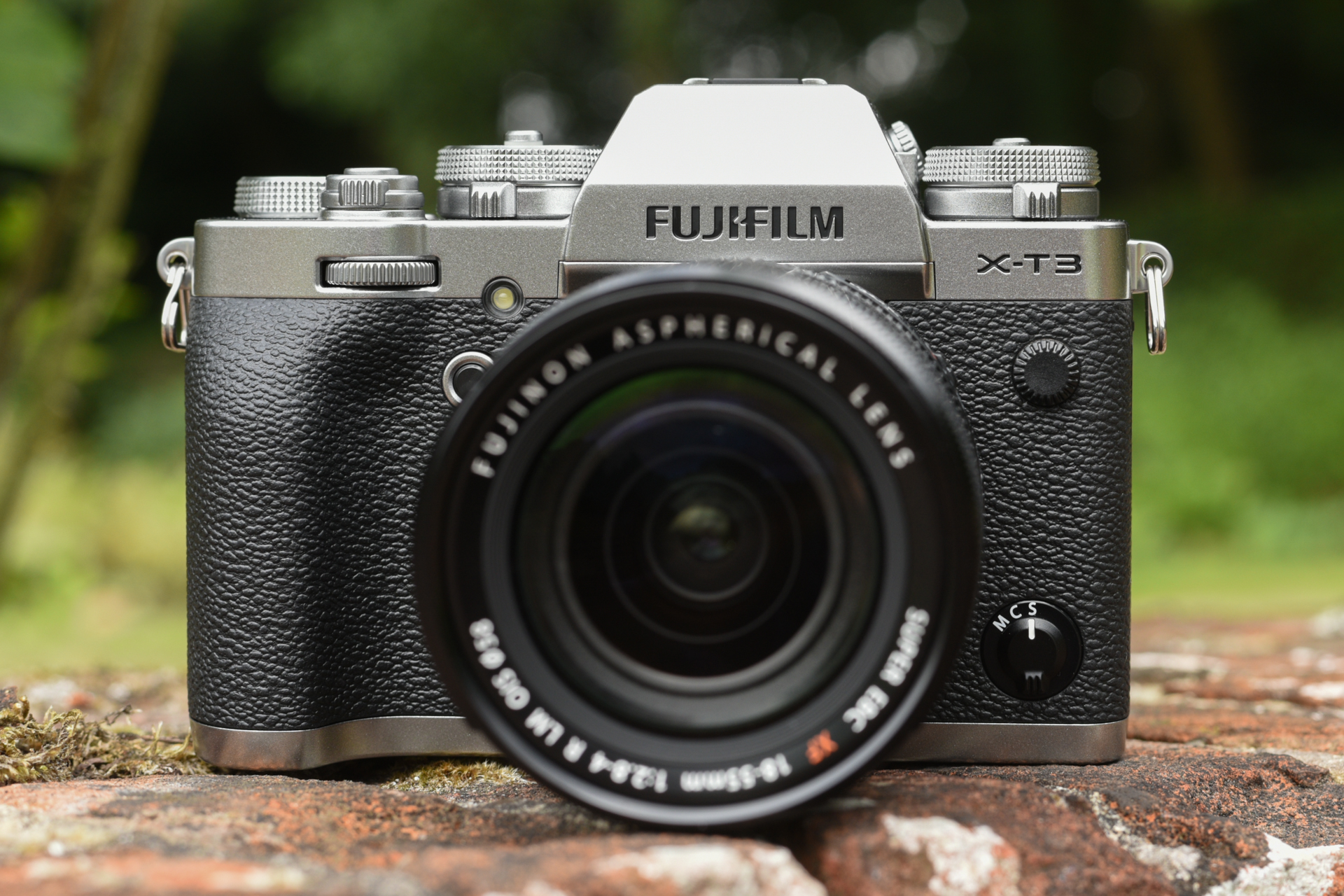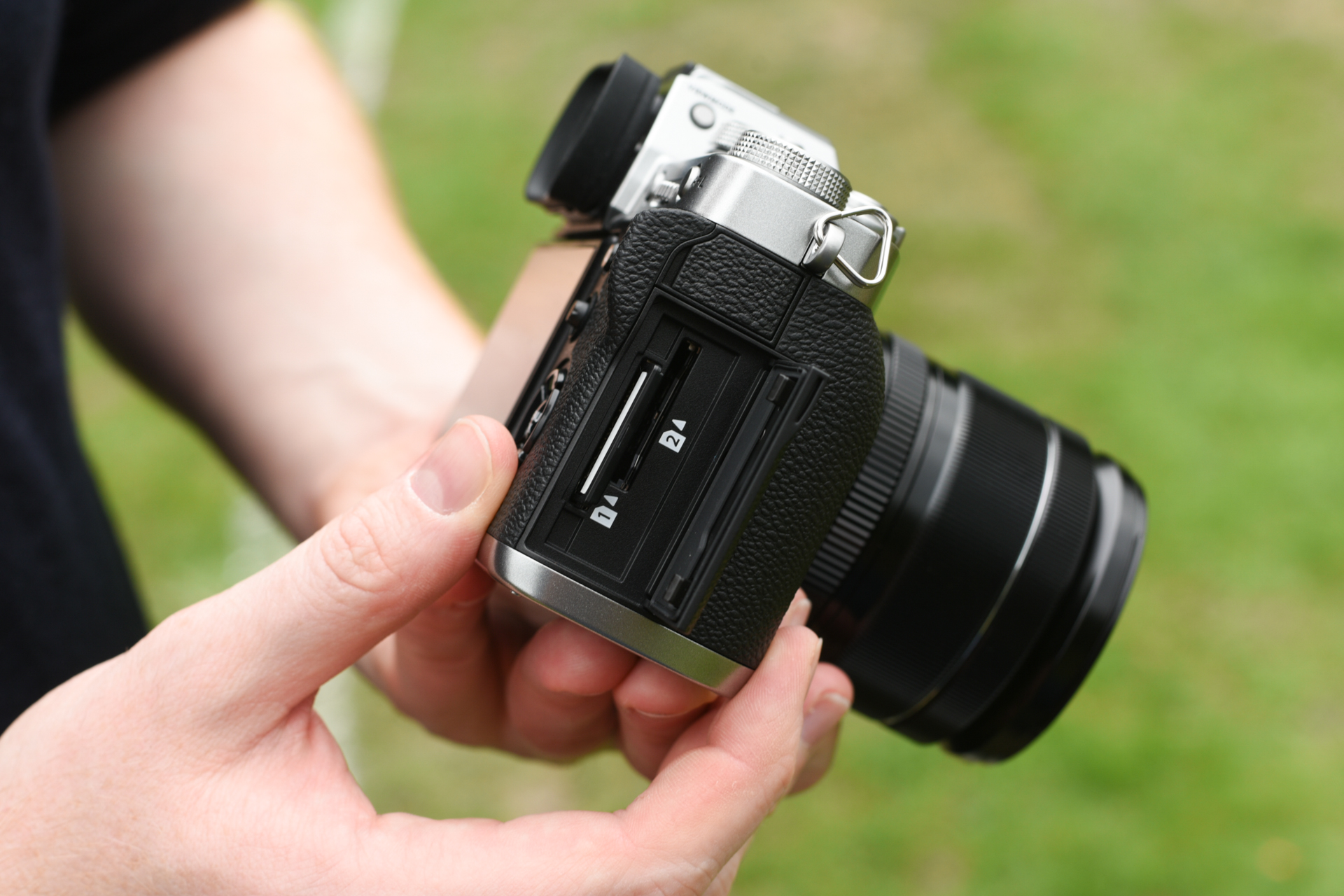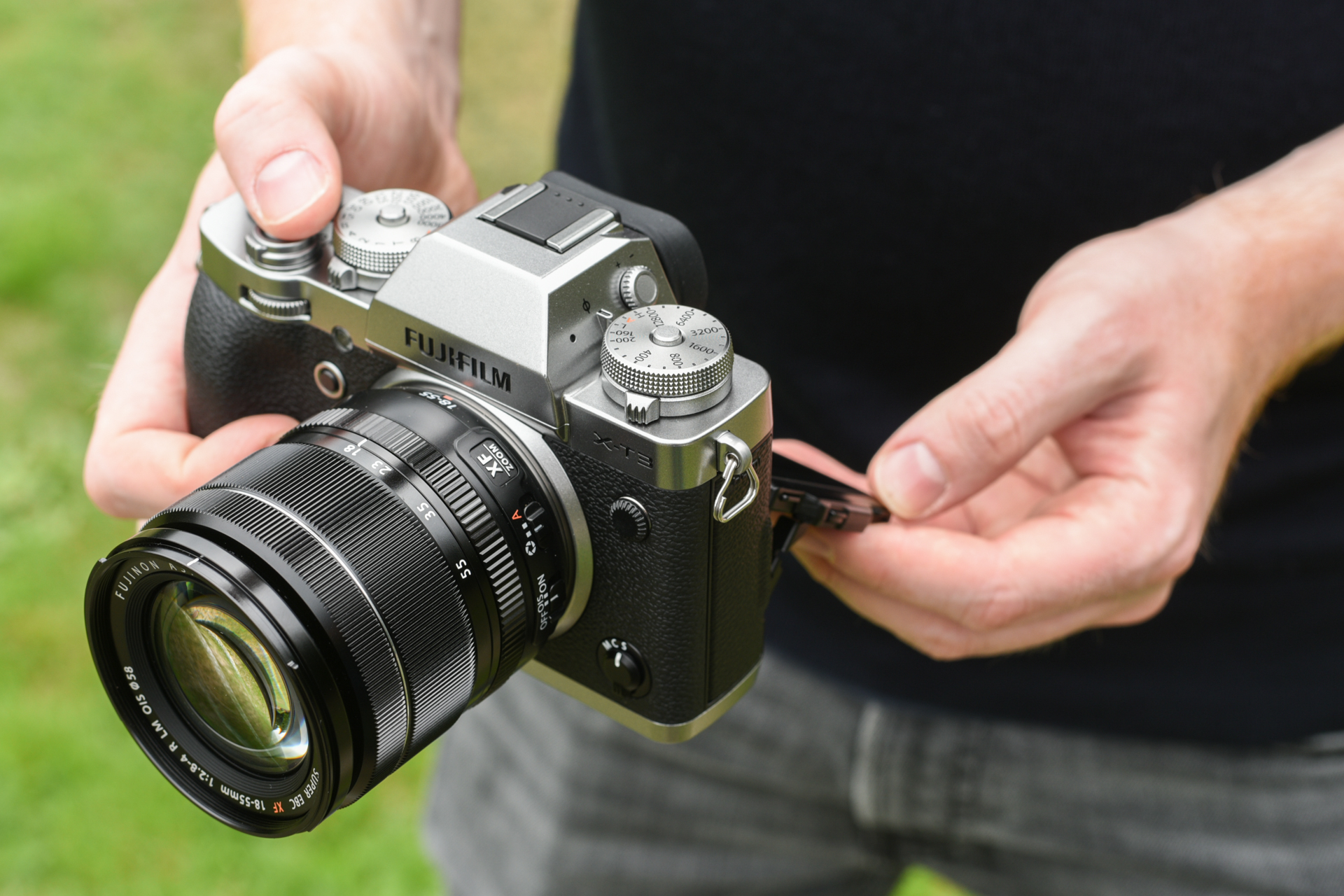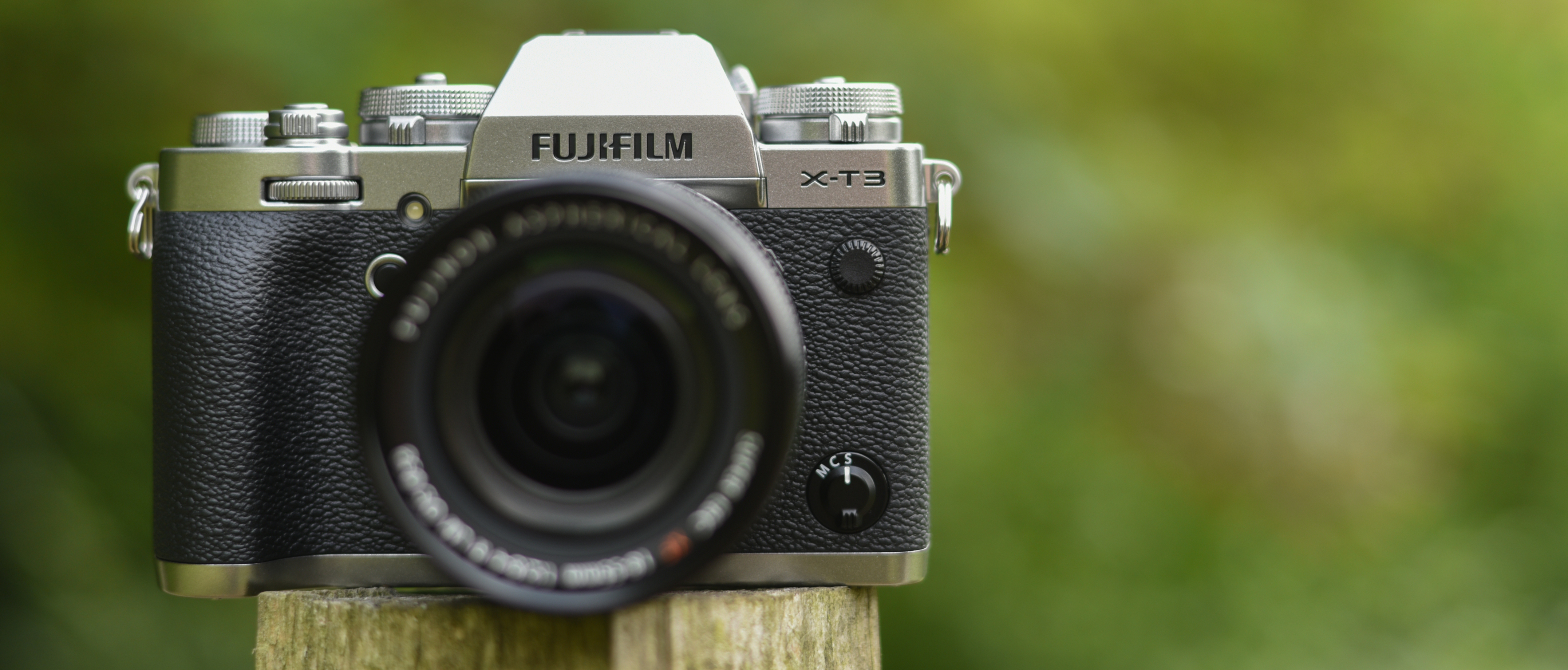Why you can trust TechRadar
Build and handling
- Weather-resistant design
- Die-cast magnesium-alloy body
- Shutter speed, ISO and exposure compensation dials
For the design of the X-T3’s body, Fujifilm hasn’t changed a great deal from the X-T2, which itself wasn’t too far removed from the X-T1 – but a handful of changes have been made.
There's a bit more room on the back for the thumb to sit and some of the buttons on the back plate are both slightly larger and easier to press into the body than before. The dials have been very gently redesigned, and the diopter control also now needs to be pulled out of he body before it’s adjusted, which helpfully prevents it from being inadvertently knocked.
The exposure compensation dial has also moved a little further into the body to minimise the risk of the same thing happening, although it cannot be locked in place like the shutter speed and ISO dials, and so it still appears somewhat susceptible to the issue. There seems to be no good reason why this can’t have the same kind of locking button as the other dials, even if its smaller size would make adjustments a little more fiddly here.

The door to the ports at the side of the camera can also now be removed (above) to allow for multiple cables to be used without it getting in the way. You just slide down the catch and the door comes away quite easily.
Build quality is just as solid as we’ve come to expect for an X-T model, as is attention to detail around the body and its various controls; Fujifilm hasn’t cut corners here. The camera weighs 539g without a lens and 869g with the XF18-55mm f/2.8-4 R LM OIS kit lens attached, and it feels substantial.
Those using longer lenses may wish for a body with a deeper and/or more sculpted grip, as the one here only offers so much room for purchase. Naturally this would compromise portability, but the camera is already somewhat weighty before you put a lens on, so a marginally deeper grip would probably support all but the smallest pancake lenses a little better. Still, those with average-sized hands will probably consider the shape of the grip and the protrusion at the side of the rear plate, together with the good use of rubber on each, to provide a more than adequate hold.





Overall, the setup provides a positive shooting experience. The presence of an AF lever makes adjusting the focusing points easy, whether you're moving left to right, up or down, or diagonally, while the ease with which the command dials rotate and the way they positively click into the body makes changing settings pain-free.
The ability to customise so many of the camera's controls also makes it easy to quickly call upon the Sports Finder option or a different Film Simulation mode among other things, so if you imagine you'll be alternating between these with any regularity you'll probably be very happy with how easy Fujifilm has made it for you. The front-plate's Fn button in particular is located right where the middle finger can quickly access it without you needing to reposition your hand.
If you're a left-eye shooter, one thing you may find is that your nose gets in the way of the AF lever and some of the directional buttons on the menu pad when you're looking through the viewfinder.
Autofocus
- Hybrid phase- and contrast-detect AF system
- 2.16million phase-detect AF pixels
- 425 AF points
While the X-T3 maintains the same kind of phase- and contrast-detect AF system as the X-T2, the new sensor and processor have changed what's possible.
The sensor on the X-T3 now offers 2.16-million phase-detect AF pixels that stretch across approximately 99% of both vertical and horizontal axes. This is a four-fold increase over the X-T2’s 500k pixels, and the wider distribution means that the system should be able to maintain a similar performance across the whole area. This is particularly key when shooting video or when using continuous focus, where phase-detect AF pixels are better suited to keeping track of moving subjects.

425 AF points can be manually addressed by the user, but you can knock this back to 117 points if you don’t want to have to move through so many to get around. It’s also possible to adjust the size of the focusing area so that the camera can more accurately focus on the subject. So, for example, you may want to make this as small as possible when focusing on the stamens of a flower, as the camera may not identify them as easily otherwise.
When used for everyday shooing, the camera is capable focusing quickly and precisely on a range of subjects, and focusing is very quiet with the aforementioned 18-55mm kit lens. The slight hesitations against low-contrast subjects are expected, and the camera does occasionally struggle here, but it generally does well when lighting conditions aren't great (more so in the Wide/Tracking and Zone options than when you've defined the AF point yourself)
Fujifilm has developed a fairly comprehensive selection of options over continuous focus, and you can choose from a Canon-like collection of presets to suit different kinds of moving subjects
Fujifilm has developed a fairly comprehensive selection of options over continuous focus, and you can choose from a Canon-like collection of presets to suit different kinds of moving subjects – and if none of these match you can create you own. We were very pleased with the camera’s ability to keep track of moving subjects when we first handled it at the official launch, and using it again confirms how well this works.
Most of the time when focusing on a moving subject, the camera acquires focus in very good time, although this will depend partly on the lens used. There were a handful of occasions during this review where the focusing system struggled to get a lock initially, and other times when the camera would lose focus for a couple of frames before regaining it again, but 90% of the time it appeared to adhere to the main subject without issue.
The system appeared to stay very well with subjects as they moved towards or away from the camera, and the spread of phase-detect AF points meant that the camera was able to track these right to the peripheries. Considering how ill-suited mirrorless cameras used to be for these tasks next to DSLRs, the X-T3's performance is commendable.

Using the Sports Finder mode here at 30fps, the camera delivers on its promise of blackout-free shooting, and you retain visibility of the AF system working as it powers through these, although this speed does mean you can't quite appreciate every frame being captured (you do get a flashing icon on the top-left-hand side of the screen as this happens).
A camera's ability to detect eyes when shooting portraits has become a sought-after feature in recent years, and Fujifilm claims to have improved face/eye detection for the new model. And its ability to detect eyes also proved to be very good; as we might expect, it did occasionally fail to achieve the initial lock-on if the subject only occupied so much of the frame, or in high-contrast conditions, but it proved itself to be a very good performer when the subject was the main element in the scene, and as it moves around.

The touchscreen can also be used to focus on subjects, and also to capture the image as soon as the camera has acquired this, if you want it to do so. Even with the XF18-55mm f/2.8-4 R LM OIS kit lens, focusing happens promptly and quietly, and this is particularly useful when using a tripod. The responsiveness of the screen makes it easy to accidentally knock and focus or capture an image when you're not intending to do so, however, so you may want to deactivate this for general use.
Current page: Build, handling and AF
Prev Page Introduction and key features Next Page Performance and image quality